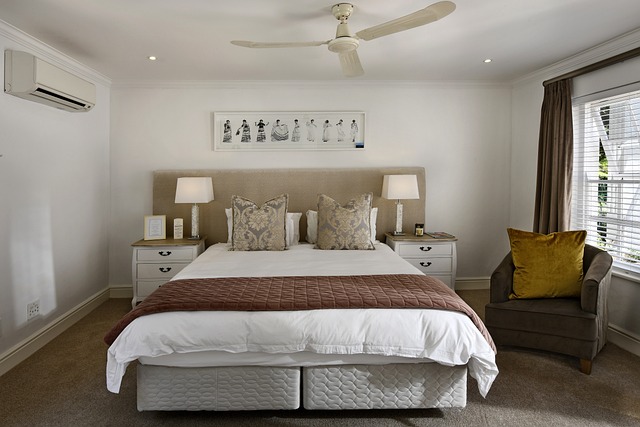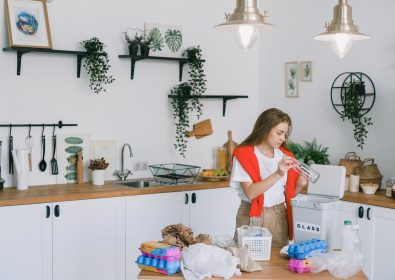10 Essential Interior Design Tips for Small Spaces
By Jake WalkerLifestyle
10 Essential Interior Design Tips for Small Spaces
Living in a small space doesn’t mean you have to sacrifice style or comfort.
Whether you’re renting a compact apartment or working with a tiny room, designing a small space requires a little creativity, some strategic thinking, and a few smart design tricks.
The key is to make your space work harder, not harder on your wallet! Here are 10 essential interior design tips to help you transform even the smallest of spaces into something functional, beautiful, and full of personality.
1. Maximise Multi-Functional Furniture
When you’re working with limited space, it’s important to choose furniture that serves multiple purposes.
Multi-functional pieces are the best way to save space without compromising on style. A sofa bed, for example, allows you to have a comfortable seating area during the day and a bed at night.
Likewise, a dining table that doubles as a desk or a coffee table with hidden storage can help keep things organised. Look for furniture with built-in shelves, foldable features, or anything that offers extra storage. This way, you get maximum use from every item.
2. Opt for Light, Neutral Colors
Light and neutral colours make a small room feel more open and airy. Think whites, soft greys, beiges, and pastel shades. These hues naturally reflect light and give the illusion of space.
If you prefer darker tones, use them sparingly—perhaps on one accent wall or in accessories—but keep the main palette light to avoid making the space feel cramped.
Don’t forget that lighter colours on the ceiling, like off-white or soft cream, can also make a room feel taller. Check out this colour psychology guide to learn more about how colour can impact the perception of space.
3. Go Vertical with Storage
When floor space is tight, don’t forget to look up!
Utilise vertical space by installing high shelves, tall bookshelves, or hanging racks.
This will not only give you more storage options but also draw the eye upward, making the room feel taller.
Wall-mounted hooks or pegboards in kitchens and bathrooms are perfect for small accessories or items that you frequently use. A smart use of vertical space can completely transform the functionality of a room.
4. Incorporate Mirrors to Create Illusions
Mirrors are a simple and effective way to make a small room feel larger.
By reflecting light, mirrors open up space, making a room feel brighter and airier. Consider placing a large mirror opposite a window to bounce light around the room.
Even smaller mirrors strategically placed throughout the space can help create a feeling of depth and openness. Mirrors don’t just serve a practical purpose; they can also act as stylish décor that adds character to your space.
5. Choose Low-Profile Furniture
In smaller spaces, you don’t want to overwhelm the room with large, heavy furniture.
Opt for low-profile pieces that don’t block sightlines or crowd the space. A low-profile sofa or bed creates an open feeling, as does furniture with sleek, thin legs.
Avoid anything too bulky or oversized, as it will make the space feel more cramped. Look for minimalist designs that allow you to maximize the feeling of open space while still providing all the functionality you need.
6. Add Texture for Warmth and Interest
Adding texture to a small space can make it feel more welcoming and cosy without cluttering it up.
Mix and match materials like a velvet throw, a wool rug, or leather cushions to create layers of texture. Polished plaster is another great way to add depth and warmth to your walls.
It’s a modern, luxurious finish that gives the space a soft, sophisticated look without overpowering the room. Texture helps add richness and visual interest, making your small space feel more dynamic.
7. Use Vertical Gardens or Hanging Plants
One of the best ways to add life and colour to a small space without taking up precious floor area is by incorporating vertical gardens or hanging plants.
Not only do plants add a refreshing natural element, but they also make the space feel more inviting and lively. You can hang plants from the ceiling, install wall-mounted planters, or create a vertical garden along a bare wall.
This allows you to bring greenery into your space without cluttering the floor, and it’s a perfect solution for apartment dwellers or anyone with limited space for traditional indoor gardens.
8. Create Zones with Rugs and Furniture Arrangements
Even in a small space, it’s important to establish separate “zones” within the room for different activities—like a sleeping area, a dining space, or a reading nook.
Rugs are a great way to define these areas, helping to visually separate them without using walls or dividers. Arrange your furniture in a way that creates natural flow while also marking off these distinct areas. A well-thought-out layout can make even a small room feel organised and thoughtfully planned.
9. Choose Lighter Window Treatments
Heavy curtains or dark blinds can make a small space feel even more cramped. Instead, opt for lighter, airy window treatments that let in natural light and keep the room feeling open.
Sheer curtains, blinds, or shades in neutral colours will allow light to filter through, creating a brighter, more inviting environment. This will also help with airflow, preventing your room from feeling stuffy.
10. Incorporate Smart Lighting Solutions
Lighting is one of the easiest ways to make a small room feel more spacious. Layering your lighting with a mix of overhead lights, task lighting (like a desk lamp), and accent lights can add depth and warmth to the space. Consider using wall-mounted light fixtures or pendant lights to free up floor space. LED strips along shelves or under furniture can also create a soft glow, making the room feel cosy and well-lit without taking up valuable space.
Key Takeaways
Don’t let a small space limit your creativity. Start applying these simple, effective design strategies today to make your home feel bigger, more organised, and uniquely yours!
Author: Jake Walker
Jake Walker is a 27-year-old blogger from Manchester, UK, and the creator of Life Social. He writes about navigating your 20s, offering personal stories, practical advice, and plenty of humour. From career tips and fitness to work-life balance and enjoying life on a budget, Jake keeps it real and relatable for anyone trying to make the most of their twenties.






